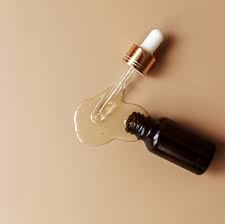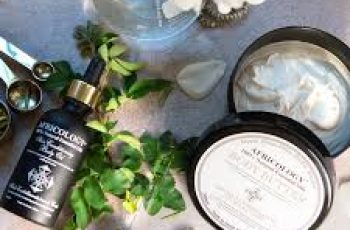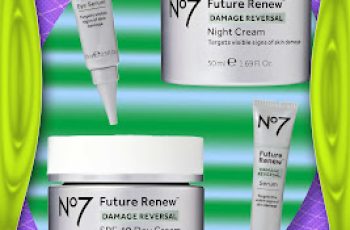When you think of the best acne-fighting products, the first things that come to mind might be all-stars like salicylic acid, benzoyl peroxide, and retinol.
While these products certainly live up to their reputations, there’s another lesser-known ingredient that doesn’t get enough credit for its acne-fighting benefits: azelaic acid.
“Azelaic acid is a naturally occurring acid found in grains like wheat, barley, and rye,” says board-certified dermatologist Dr. Stacy Chimento, MD, of Riverchase Dermatology in Gulf Harbor Islands, Florida.
It can also be produced by yeast on the skin. “It’s commonly found in creams, gels, or foams and can reduce inflammation, promote skin cell turnover, and relieve acne.”
Similar to other popular ingredients known for their skin-loving properties, azelaic acid has a variety of uses, but is best known for its ability to fight acne and rosacea.
“As an anti-inflammatory agent, azelaic acid can reduce inflammation, making acne less noticeable, less red, and less irritated,” says Dr. Chimento. Additionally, the ingredient can help clear pores of bacteria that can cause breakouts.
At the same time, it promotes cell turnover and slows the production of melanin, which can lead to hyperpigmentation and melasma.
Of course, there are a few things to keep in mind if you’re considering incorporating it into your daily skincare routine. First, it should be applied about 15 minutes after cleansing and before moisturizing so that it can be fully absorbed into the skin.
“Azelaic acid should be used morning and night, preferably with a moisturizer or serum,” says Dr. Aza Halim. “It should also be well blended into the skin or applied to dark spots and absorbed to avoid edges that make the skin look patchy.”
According to Dr. Chimento, you’ll usually want to take azelaic acid with something else, as it can take a while to see noticeable results when using the ingredient alone—but you should certainly be careful about what you mix it with.
“While azelaic acid can be mixed with almost any product, using it with beta-hydroxy acids (BHAs) like salicylic acid can increase the risk of dryness and irritation,” says Dr. Chimento.
“If you use an over-the-counter, stronger form of azelaic acid, you should consult your dermatologist before mixing or combining it with any ingredients or products.”
Anyone using azelaic acid may also experience side effects, such as irritation, redness, flaking, peeling skin, and/or hives, but not everyone experiences this.
If you have sensitive skin, Dr. Halim recommends slowly introducing this ingredient into your routine (start with a few times a week and then increase to daily use). However, if you notice any of the side effects listed above, you should discontinue use immediately. If you’re ready to make a change, read on to learn about some azelaic acid-rich products worth adding to your diet. 1. Paula’s Choice 10% Azelaic Acid Booster: Azelaic acid isn’t the only active ingredient in this acne-fighting product. It also contains salicylic acid and licorice root to eliminate acne-causing bacteria on the skin while balancing skin texture and softening blemishes. 2. The Ordinary Azelaic Acid Suspension 10%: Imagine adding four extra products to your skincare routine for less than $10 and experiencing the benefits of each. Here’s how to use this versatile, affordable product that reduces blemishes, evens out skin tone, and infuses your skin with antioxidants.
3. FaceTheory Lumizela Azelaic Acid Serum A10: This botanical serum with 10% azelaic acid clears skin bacteria and reduces blemishes. Plus, ingredients like oatmeal and aloe can minimize irritation,
the appearance or swelling caused by rosacea.
4. Sodium Azelaate Topical 10%: This product uses azelaic acid along with other key ingredients like vitamin C and niacinamide to minimize congestion, redness, and discoloration while reducing excess oil production.
5. Typology Oil Control Serum 10% Azelaic Acid: This lightweight serum can be massaged into skin morning and night to reduce excess oil production. According to some reviews, it’s also effective as a spot treatment.
6. PCA SKIN Pigment Gel: This gel-serum contains a combination of azelaic, lactic, and kojic acids to treat hyperpigmentation and brighten your skin by slowing down melanin production.
7. Dr. Brandt Dark Spot Eliminating Triple Acid Stain Minimizing Concentrate: This targeted treatment aims to fade dark spots and discoloration with tranexamic acid, a dermatologist’s go-to treatment for hyperpigmentation.
8. TULA Skincare Clear It Up Acne + Skin Correction Gel Clear skin doesn’t have to come at the expense of moisture. Enriched with azelaic and salicylic acids, this formula reduces the appearance of acne and prevents future breakouts without drying out the skin.
DQH Can I use salicylic acid first and then vitamin C?
It’s easy to create a skincare routine, but knowing how to use it is another thing entirely. In most cases, if you’re not getting the desired skin results, it could be due to the layering of conflicting ingredients. So, is it possible that salicylic acid and vitamin C are such ingredients? Or are these active ingredients the duo that’s been missing from your skincare routine? If you want answers, stick around because today we are going to explain the benefits of salicylic acid and vitamin C and how they can be used in your daily life.
What are the benefits of salicylic acid for skin?
Salicylic acid is one of the most commonly used beta hydroxy acids and is favored by many people with oily, acne-prone skin. This acid is derived from willow bark, and unlike its water-soluble relatives (called alpha-hydroxy acids), salicylic acid is oil-soluble, which means it can penetrate deeper into the lower layers of the skin. Once it reaches the lower layers, it can help unclog pores of excess sebum, dirt, bacteria, debris, and impurities. This results in clearer skin tones and greater definition.
Not only does salicylic acid benefit the underlying layers, but the outer surface of the skin benefits as well. When applied to the skin, salicylic acid removes the buildup of dead skin cells. This is accomplished by breaking the bonds that hold dead cells to the surface. Over time, this can cause the complexion to look dull and prone to acne, blackheads, and other blemishes.
If you’d like to learn more about salicylic acid and how it can improve your skin, check out this dedicated blog post from a beauty insider.
What are the benefits of vitamin C for skin?
Vitamin C is considered one of the most powerful antioxidants, which means it is very effective at fighting free radicals and preventing them from causing further skin damage. Examples of free radicals include pollution, central heating, UV rays and harsh climate. They attack proteins, fats and cell membranes as soon as they come into contact with the skin, causing signs of premature aging such as fine lines and wrinkles as well as hyperpigmentation, flaky patches of skin and loss of elasticity.
Many people usually prefer to use vitamin C in their morning routine as this ingredient gives the complexion a radiant glow. You’ll also find that vitamin C can target areas of hyperpigmentation, plumping the skin and reducing the appearance of fine lines and wrinkles.
The thing about vitamin C is that there are a lot of outdated studies going back to the 1950s that describe vitamin C as an unstable skin component. Thanks to improvements in modern technology, this is no longer the case as all products now contain a stable form of vitamin C.
Visit The Beauty Insider to learn more about vitamin C. So please check out our blog post.
Can I use salicylic acid first and then vitamin C?
Yes, you absolutely can. In fact, it’s thought that using salicylic acid before using vitamin C ensures it penetrates faster and works faster.
This is an efficient way to utilize two power sources, and the reason has to do with pH. For example, the skin’s natural pH is about 4.7, making it slightly acidic. Salicylic acid and vitamin C are also both acidic, and you’ll find that vitamin C is absorbed quickly into the skin. Therefore, using salicylic acid beforehand can increase the acidity of the skin and allow vitamin C to penetrate into the skin faster.
While this is considered an effective way to combine two powerful ingredients, you need to be aware of your skin type and how it reacts to certain active ingredients. Even people with perfect, normal skin can experience skin sensitivity and irritation. Therefore, always consult a doctor or dermatologist before using any new products on your skin.
It’s also important to follow skin application rules. In this case, you need to use the product correctly to ensure you get the best results for your skin. If you’re not sure what I mean, the basic rule for skin is to start with the thinnest consistency and work your way up to the thickest consistency. This prevents a barrier from forming on the surface, preventing other active ingredients from penetrating the skin.
Can I use salicylic acid at night and vitamin C in the morning?
Yes, absolutely, this is considered the most effective way to get returns without any adverse side effects. This is because there is enough time between applications to ensure that the skin’s pH levels return to balance.
You’ll also find that Vitamin C is rich in antioxidants and is perfect for use in the morning to ensure your skin is protected and looking its healthiest. Due to the small size of salicylic acid molecules, it is an acid that is able to reach the deepest parts of the skin. While this is effective at keeping skin clear, it also increases the risk of irritation and photosensitivity. Therefore, many people prefer to use powerful BHAs in their evening routine without exposure to UV rays, pollution, or harsh weather.
Warning: If you avoid using sunscreen every day, none of these ingredients will do what your skin needs. The combination of chemical peels and powerful ingredients increases the risk of further damage to the skin’s surface. Use SPF 50 every day to keep your skin protected and your lipid barrier healthy, even on cloudy days, keeping your skin in top condition.



